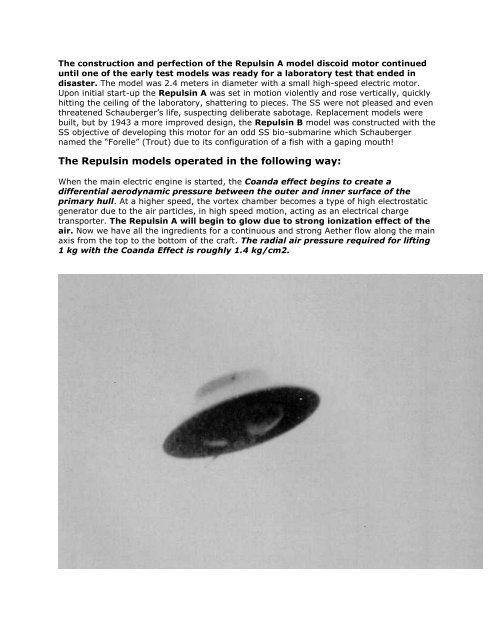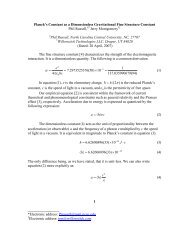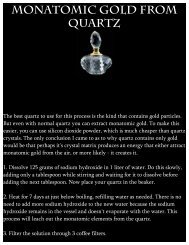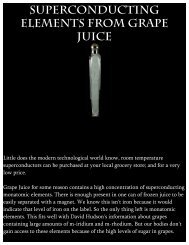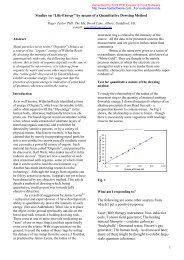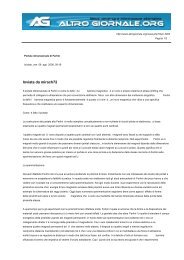Viktor Schauberger
Viktor Schauberger
Viktor Schauberger
You also want an ePaper? Increase the reach of your titles
YUMPU automatically turns print PDFs into web optimized ePapers that Google loves.
The construction and perfection of the Repulsin A model discoid motor continued<br />
until one of the early test models was ready for a laboratory test that ended in<br />
disaster. The model was 2.4 meters in diameter with a small high-speed electric motor.<br />
Upon initial start-up the Repulsin A was set in motion violently and rose vertically, quickly<br />
hitting the ceiling of the laboratory, shattering to pieces. The SS were not pleased and even<br />
threatened <strong>Schauberger</strong>’s life, suspecting deliberate sabotage. Replacement models were<br />
built, but by 1943 a more improved design, the Repulsin B model was constructed with the<br />
SS objective of developing this motor for an odd SS bio-submarine which <strong>Schauberger</strong><br />
named the “Forelle” (Trout) due to its configuration of a fish with a gaping mouth!<br />
The Repulsin models operated in the following way:<br />
When the main electric engine is started, the Coanda effect begins to create a<br />
differential aerodynamic pressure between the outer and inner surface of the<br />
primary hull. At a higher speed, the vortex chamber becomes a type of high electrostatic<br />
generator due to the air particles, in high speed motion, acting as an electrical charge<br />
transporter. The Repulsin A will begin to glow due to strong ionization effect of the<br />
air. Now we have all the ingredients for a continuous and strong Aether flow along the main<br />
axis from the top to the bottom of the craft. The radial air pressure required for lifting<br />
1 kg with the Coanda Effect is roughly 1.4 kg/cm2.


